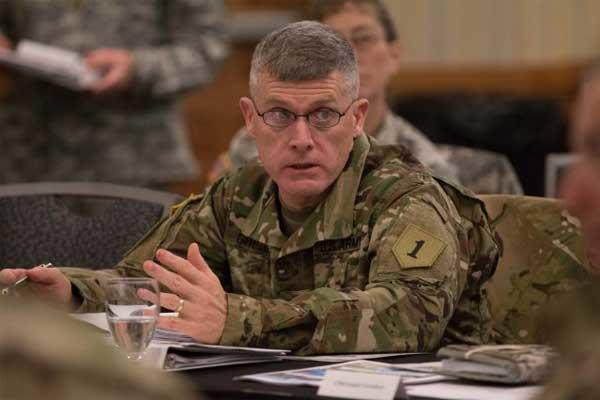The commander of the 1st Infantry Division was eager Thursday to begin integrating women into the previously restricted combat billets of the "Big Red One."
Maj. Gen. Wayne. W. Grigsby, Jr., also said he expected that opening up combat roles to women would have no impact on the readiness and operations of the division, which has 4,000 of its 15,000 troops deployed.
"I'm all for it. I think it's wonderful," Grigsby said in a video conference from Fort Riley, Kansas, to the Pentagon. "I think it will really enhance our capability to continue to work and get things done," he said.
Earlier, the Pentagon announced that all the services had submitted their plans for implementing Defense Secretary Ashton Carter's directive to open up all jobs previously closed to women and to begin recruiting, training and assigning women who qualify to those positions.
For the women of the 1st ID, it will mean qualifying for combat roles in formations that are switching from preparing for the small-unit operations of counter-insurgency (COIN) warfare to preparing for potential conflict with what the Army terms a "near-peer" competitor.
It will also mean being constantly ready to deploy. The 1st ID currently has 4,000 troops deployed to Djibouti, Honduras, Israel, Jordan, Afghanistan, Kuwait, Iraq, Qatar, Oman, Bahrain and the United Arab Emirates.
Army Chief of Staff Gen. Mark Milley has made readiness his top priority for a near-peer conflict. "So what you do is you do it," Grigsby said, and Fort Riley offers the space for realistic training. "We're able to deploy an entire brigade here out in the field – take the entire brigade out there and put them to the test."
In the coming months "I'm going to do a brigade movement to contact – all at Fort Riley" about 125 miles west of Kansas City, Grigsby said. What makes it possible is the troops, he said. "These kids have got it all," he said. "They cannot only fight COIN – they're quickly transitioning, picking up on decisive action operations we may conduct in the future."
"I think we're ready now," Grigsby said of the 1st ID. "The thing I continue to worry about is the leader development piece," he said, but the troops give him confidence. "These company commanders, these platoon leaders, they are so much better than I ever thought about being."
-- Richard Sisk can be reached at richard.sisk@military.com



























